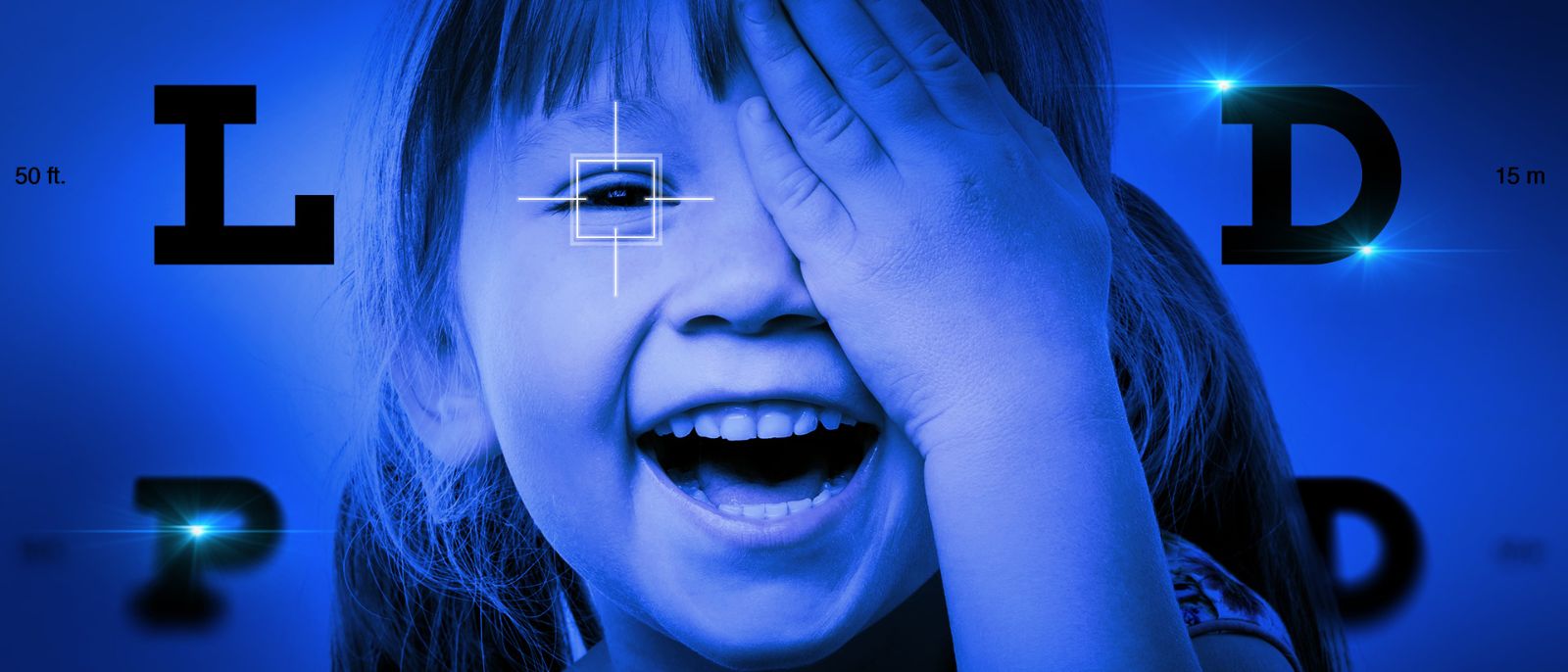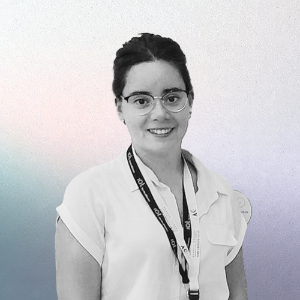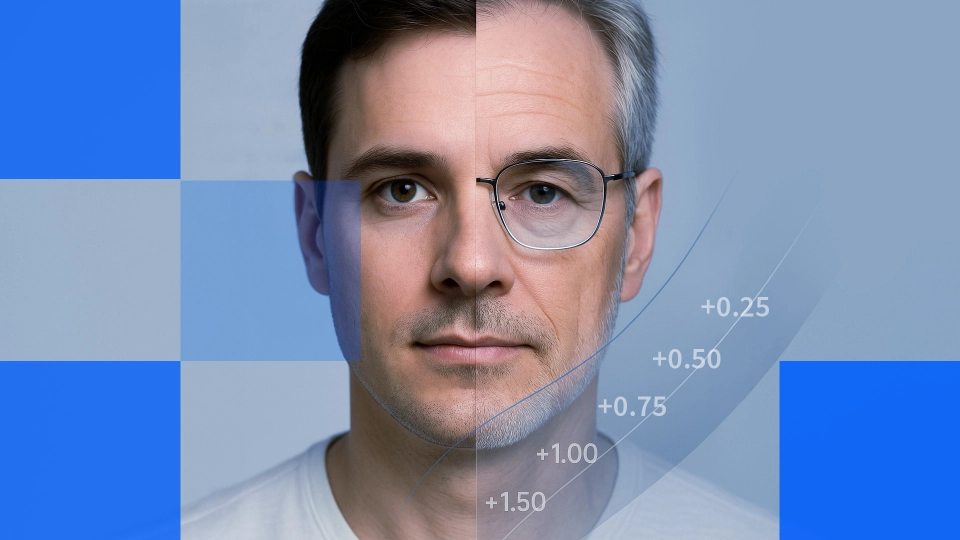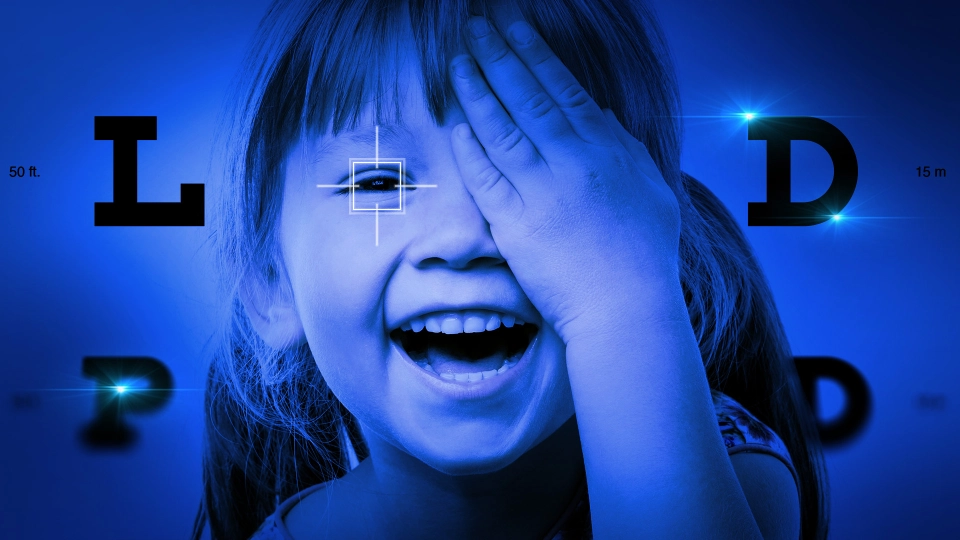
What is Myopia and Can Glasses Correct It?
- What is myopia?
- Types of myopia
- Refractive vs. axial myopia
- Simple vs. high myopia
- What is high myopia?
- How to test for myopia
- Types of myopia management treatments
- What are myopia glasses?
- How do myopia lenses work?
- Best types of lenses for myopia control
- 1. Peripheral defocus lenses
- Lens treatments
- 2. PPL/Progressive multifocal lenses
- 3. Bifocal lenses
- Considerations for prescribing myopia lenses

What is Myopia and Can Glasses Correct It?
Myopia, or nearsightedness, is a common yet increasingly complex refractive error posing significant challenges for eye care professionals. While easily recognizable by its characteristic blurred distance vision, myopia's diverse presentations, ranging from simple to high/degenerative forms, and its varying rates of progression necessitate a nuanced approach to diagnosis and management. The potential for serious ocular complications, particularly in cases of high myopia, further underscores the importance of early detection and effective intervention.
This article provides a comprehensive overview of myopia, exploring its underlying mechanisms (refractive vs. axial) and detailing the array of diagnostic tools available to eye care professionals. Crucially, we delve into the evolution of corrective strategies, with a particular emphasis on the latest advancements in lens technologies designed to correct vision and potentially slow myopia's progression, particularly in younger patients. With the prevalence of myopia projected to rise significantly in the coming decades, understanding the full spectrum of this condition and the evolving treatment landscape is paramount for eye care professionals committed to preserving their patients' long-term ocular health and quality of life.
What is myopia?

Myopia, also known as nearsightedness, is a refractive error characterized by the eye's inability to focus light directly on the retina when viewing distant objects. Light rays converge in front of the retina in a myopic eye, which results in distant objects appearing blurry, though anything nearby remains in focus.
The primary cause of myopia is an elongated eyeball or an overly curved cornea. Research has shown that myopia is genetically linked, and those with a genetic predisposition to it have higher rates of developing it.
Types of myopia
Refractive vs. axial myopia

When referring to the eyeball shape, there are two forms of myopia:
- Refractive myopia: In this type of myopia, the cornea is too curved (or the lens is too powerful), causing light rays entering the eye to be focused in front of the retina instead of directly on it. The eyeball is a regular shape, but the lens is too long, so objects appear blurry in the distance.
- Axial myopia: With axial myopia, the eyeball is abnormally long, which causes light rays to focus in front of the retina rather than directly on it. The refractive power of the cornea and lens is normal, but the increased axial length leads to the focusing issue.
Simple vs. high myopia
Additionally, myopia can be labeled depending on the acuteness and progression of the eye disorder:
- Simple/Low myopia: This is the most prevalent form. Patients typically develop simple myopia during childhood or youth, and it tends to stabilize in early adulthood.
- Degenerative/High Myopia: A less common but more severe form of myopia. Unlike simple myopia, the degeneration doesn’t slow down and plateau with age. Instead, the eye disorder continually worsens. Due to this, there is a higher chance of serious problems developing.
What is high myopia?
High myopia is also called degenerative myopia or and pathological myopia. It occurs when the eye has a refractive error of -6.00 diopters or greater. For comparison, simple myopia falls between -0.5 and -6. The more severe the progression of high myopia, the more likely a person is to suffer significant eye issues like retina detachment, glaucoma, and myopic maculopathy.
Early detection and management can help slow the progression of myopia, but with high myopia, even surgery is not a guaranteed fix. ECPs expect the eye to worsen, so high myopic patients require consistent eye care.
How to test for myopia
Eye care professionals use a variety of tests to diagnose myopia. Once the ECP identifies the eye disorder, they may choose to add additional tests to help narrow in on the severity of myopia.
- Visual acuity: ECPs can use standardized distance testing to identify where patients lose focus. The Snellen test is a prevalent version, calling to mind the classic image of letters in a row progressively getting smaller in size the further down the chart they go. The results of this test are numerical fractions and how patients commonly speak about their vision, such as “20/20” and “20/40.”
- Objective refraction: This objective test determines the refractive error of the eyes and can be conducted using either retinoscopy or an autorefractometer. Retinoscopy involves shining light into the patient’s eyes and observing the reflection off the retina, while an autorefractometer automatically measures the refractive error. The autorefractometer is typically used due to its ease and speed, though retinoscopy may be necessary in cases where the patient has reduced mobility or other specific needs. The results from this objective method provide an initial measurement that is further refined in the next step.
- Subjective refraction: After obtaining the objective refraction, a subjective refraction test is performed. Using a phoropter, patients look through lenses of varying strengths and provide feedback on which lens offers the clearest vision. This process refines the measurements taken during retinoscopy or autorefractometer measurement, ensuring that the patient’s subjective perception ultimately determines the correct prescription for glasses.
- Slit-lamp Examination: The patient sits in front of the slit lamp while the eyecare professional examines the front part of the eye, including the cornea, lens, and anterior chamber, looking for any abnormalities.
- Measuring axial length: An ultrasound or optical coherence tomography (OCT) device measures the distance from the front of the cornea to the back of the retina to determine whether axial elongation is contributing to myopia.
This list is not comprehensive—an ECP may perform additional tests based on each patient’s individual situation and diagnoses to offer the best corrective solution.
Types of myopia management treatments
Contact lenses for myopia management
Soft contact lenses specifically designed for myopia management offer a convenient and effective solution for slowing the progression of myopia, particularly in children and adolescents. These lenses work by altering the focus of light on the retina, especially at the periphery, which helps to reduce the stimulus for eye elongation—a key factor in myopia progression. While soft contact lenses can sometimes cause or exacerbate dry eye symptoms due to prolonged wear, careful selection of lens materials and proper fitting can mitigate these issues, ensuring comfortable and effective myopia management.
Orthokeratology (Ortho-K) contact lenses
Orthokeratology (Ortho-K) lenses are specially designed rigid gas-permeable lenses worn overnight to reshape the cornea temporarily. This approach allows for clear vision during the day without the need for glasses or contact lenses, and it is particularly effective in slowing the progression of myopia in children. The overnight wear flattens the cornea and prevents the eye from elongating as much as it would otherwise, slowing myopia's progression.
Myopia management lenses
Myopia management lenses are advanced lenses designed to both correct nearsightedness and slow its progression. By incorporating specialized technologies that influence how light is focused on the retina, these lenses help manage myopia, particularly in younger patients.
What are myopia glasses?
Myopia glasses, or corrective lenses for myopia, correct the focus issues caused by nearsightedness and slow the onset of myopia. These glasses use minus-powered lenses to diverge light rays before they enter the eye. This compensation allows the light to focus precisely on the retina, resulting in clear distance vision.
How do myopia lenses work?
Myopia glasses use concave lenses (also called minus lenses), which are thinner at the center and thicker at the edges.
- These lenses diverge light rays before they enter the eye, so the eye’s natural lens will refocus the light correctly on the retina.
- With light converging on the retina (instead of falling short of the retina), objects in the distance will appear clearly.
Additionally, a tailored prescription strength of the glasses will ensure the lenses can sufficiently correct each patient’s degree of myopia. The strength of the lenses is measured in diopters, indicated with a minus sign (e.g., -2.00 D). Higher negative numbers indicate stronger lenses for more severe myopia.
Best types of lenses for myopia control
Recent advancements in lens technology have led to the development of specialized designs aimed at correcting myopia and slowing its progression. Different lens designs help target specific issues, resulting in a clearer focus for a wearer.
1. Peripheral defocus lenses
This lens design creates a specific type of defocus on the peripheral retina, rooted in the hyperopic defocus principle. This technology corrects myopia by deliberately creating peripheral hyperopic defocus, where the central part of the lens addresses distance vision, and the peripheral areas induce the desired defocus effect. This myopic defocus on the peripheral retina is believed to signal the eye to reduce axial elongation, thereby slowing the progression of myopia. A notable example of this technology in action is the MyoLess lens, which has demonstrated in clinical trials a significant effectiveness in slowing myopia progression, demonstrating a 39% lower increase in axial length growth after 12 months.
Lens treatments
Manufacturers can add advanced lens treatments to optical designs to help correct specific instances of myopia. These lens treatments are:
- Lenslets: Lenslets are tiny lens segments embedded within the primary lens in a grid. Each lenslet creates areas of intentional myopic defocus around the peripheral vision to signal to the eye to slow its elongation.
- Rings: Concentric rings with different optical powers embedded in the lens. These rings alternate between correcting central vision and creating peripheral hyperopic defocus to reduce the eye’s growth rate.
- Peripheral diffusion: Lens segments embedded in the lens create a gradual change in lens power from the center to the periphery. This design creates a controlled gradient of defocus to slow down the eye's elongation and the progression of myopia.
2. PPL/Progressive multifocal lenses
3. Bifocal lenses
Bifocal lenses reduce eye strain by providing the necessary optical power for close-up tasks, reducing the accommodative demand. Some bifocal lenses are designed to also induce peripheral hyperopic defocus, similar to multifocal lenses. Reducing the effort required to focus on nearby objects and slowing axial elongation helps manage myopia. In situations when wearers have difficulty adapting to multifocal lenses, bifocal lenses can be a helpful alternative.
Considerations for prescribing myopia lenses
Myopia looks different from patient to patient. Treating a myopic eye requires a range of customizable lenses so that ECPs can order a tailored prescription. A portfolio of myopia needs to account for and address the following factors for proper correction:
- Age of Onset: Earlier onset typically indicates a higher risk of progression, warranting more aggressive control measures.
- Rate of Progression: Rapidly progressing myopia may benefit from specialized control lenses.
- Family History: Genetic predisposition to high myopia may influence treatment decisions.
- Lifestyle Factors: Consider the patient's visual demands, including screen time and outdoor activities.
- Compliance: Assess the likelihood of adherence to different lens options.
- Ocular Health: Evaluate the retinal health and risk of complications, especially in high myopia.
Many people are nearsighted, and if the predictions remain on trend, over the next couple of decades, as many as half of the world’s population will have myopia. Science and design push lenses further each day, offering personalized solutions that address vision correction and myopia control. As lens designs continue to iterate and incorporate advanced technology, patients' long-term ocular health and quality of life are improved.
Discover Myopia Management Lenses →
If you want to add cutting-edge freeform myopia lenses to your portfolio, please fill out the form below; our team would love to answer your questions.
MyoLess is not available in the US.






